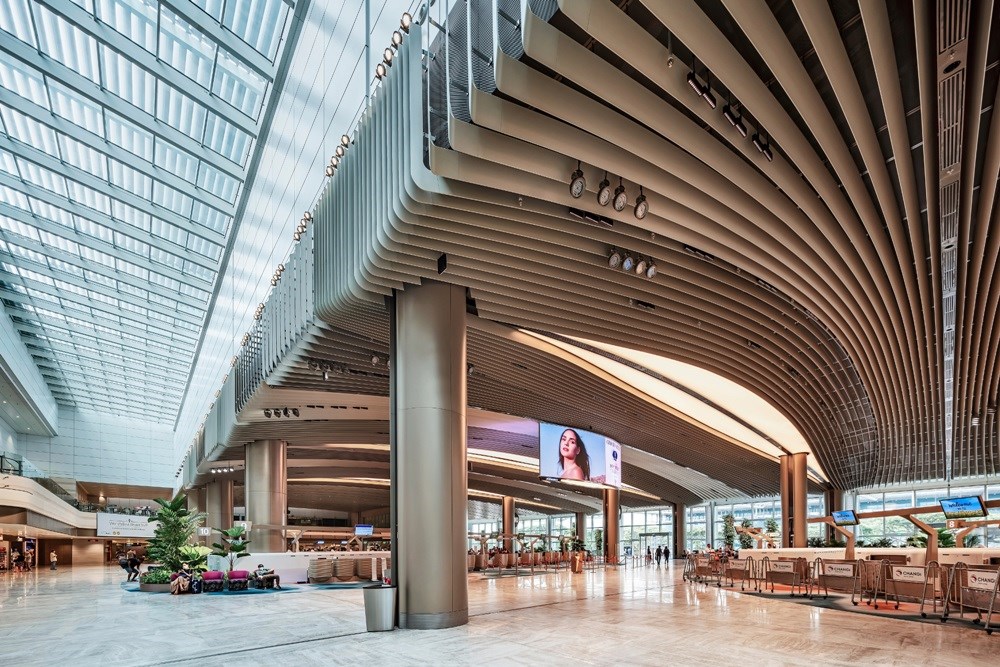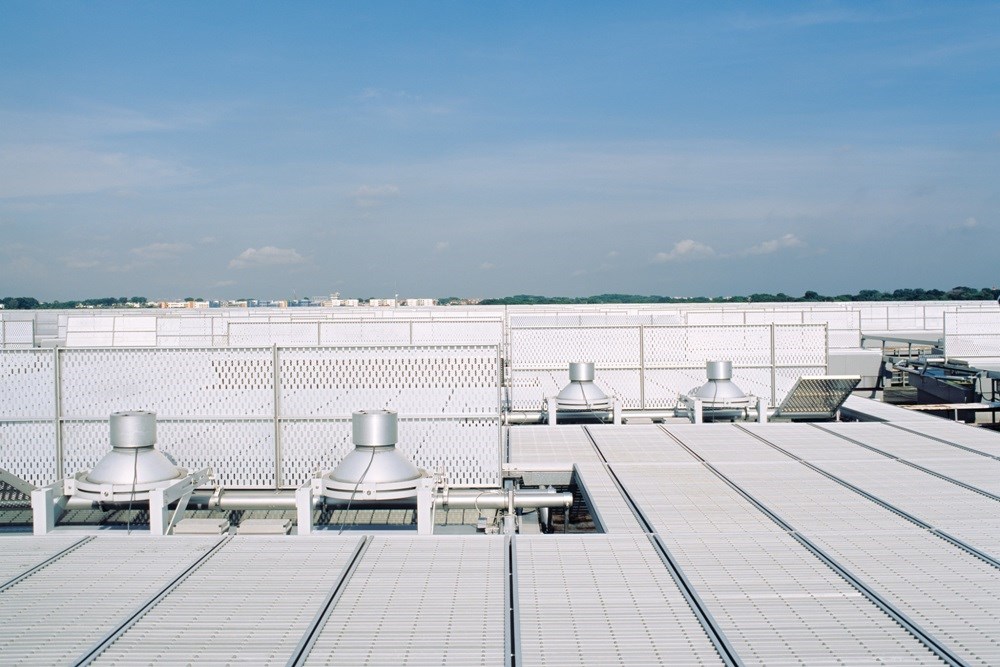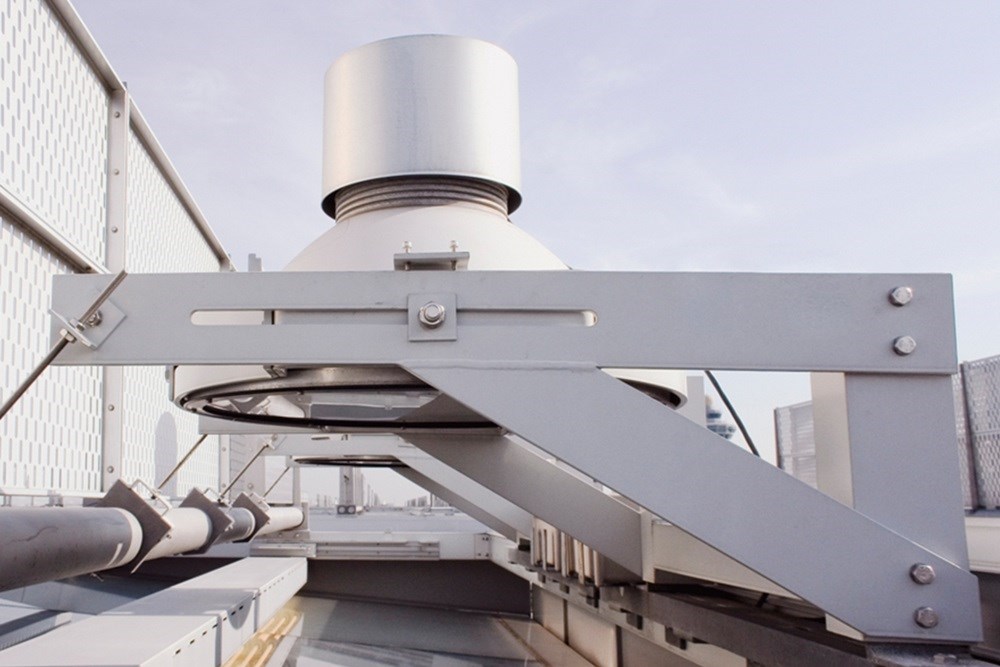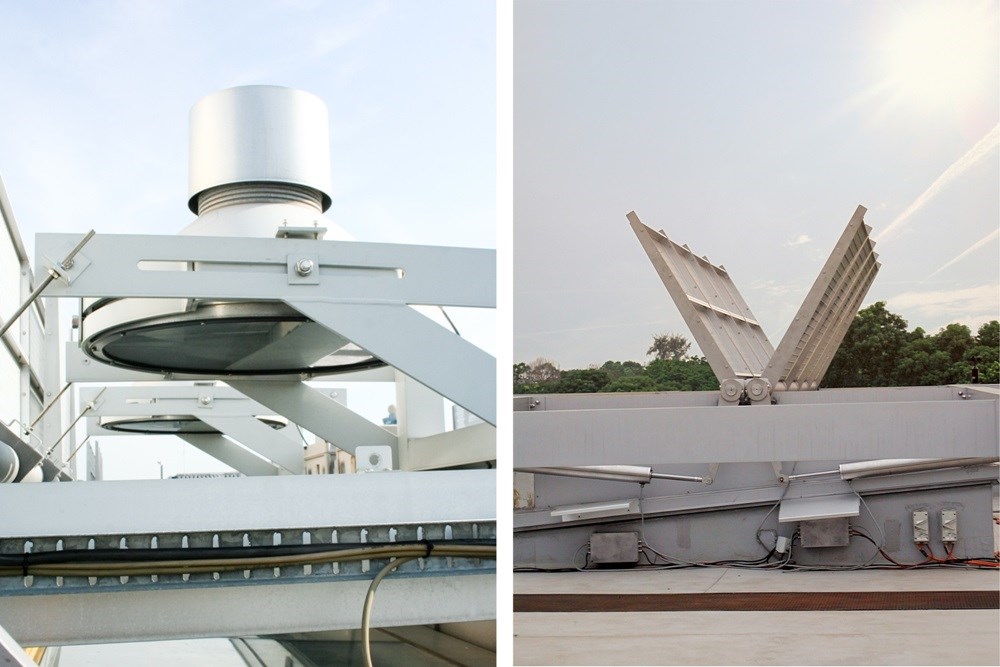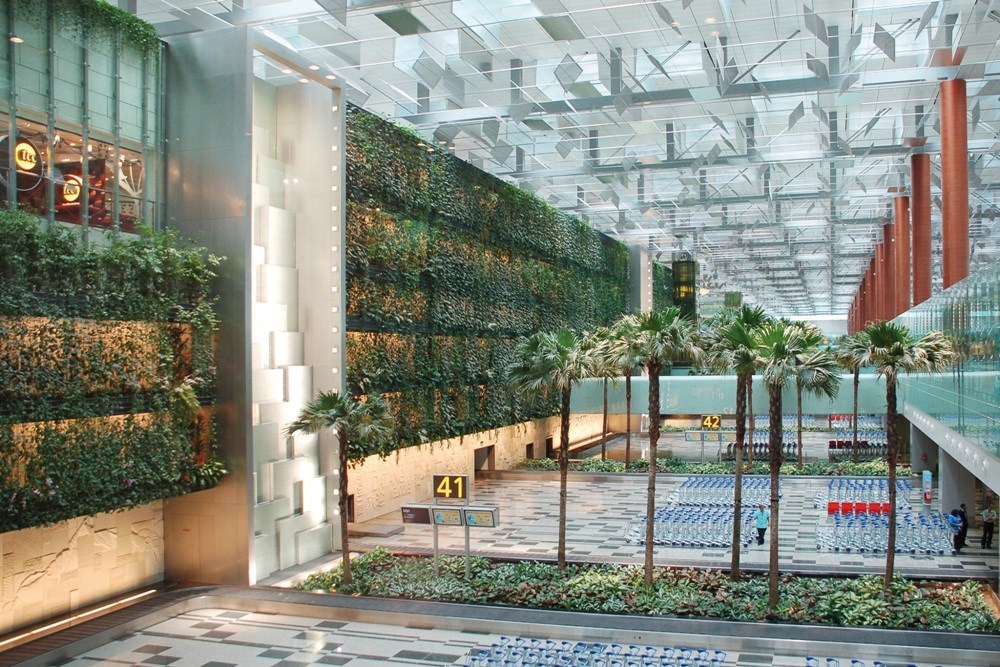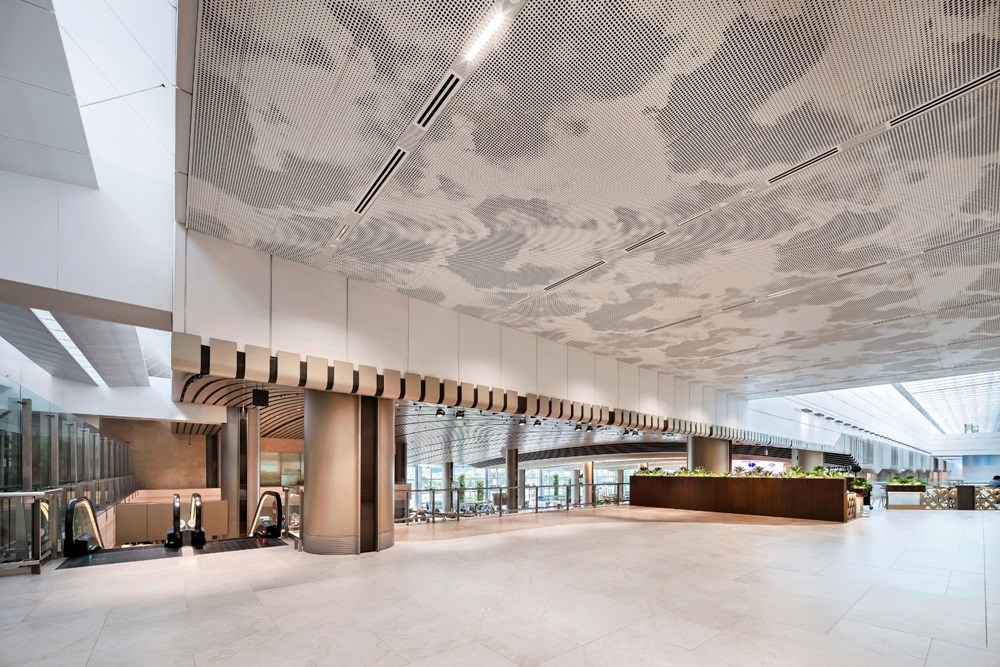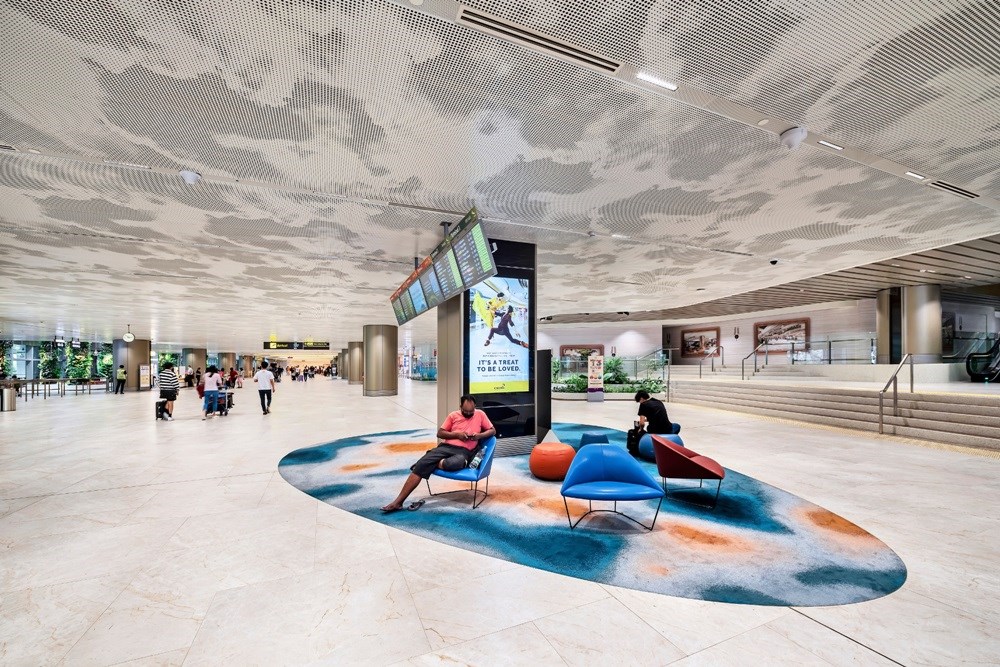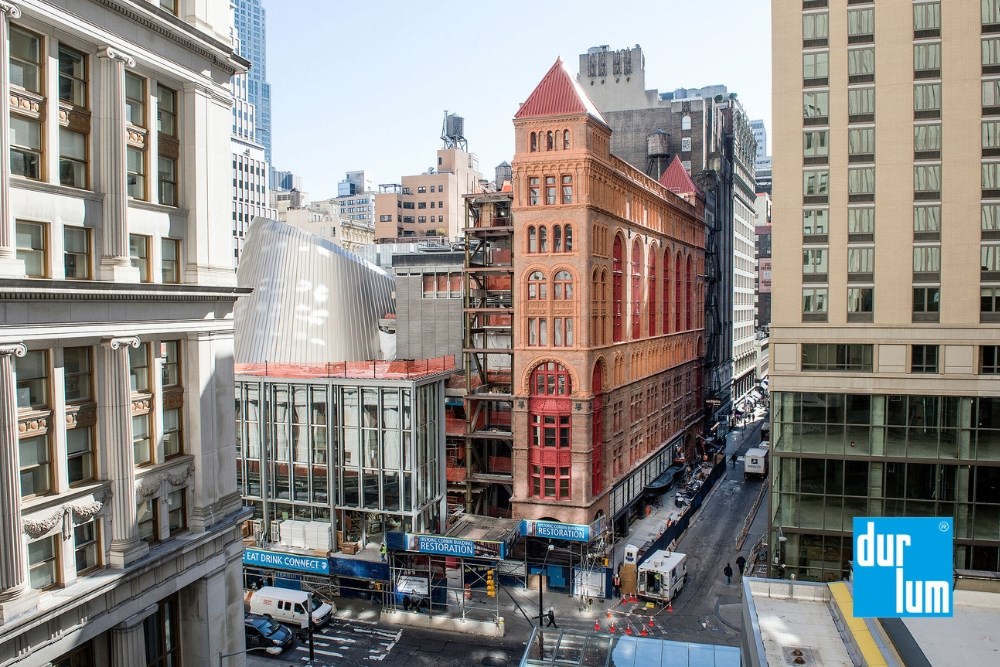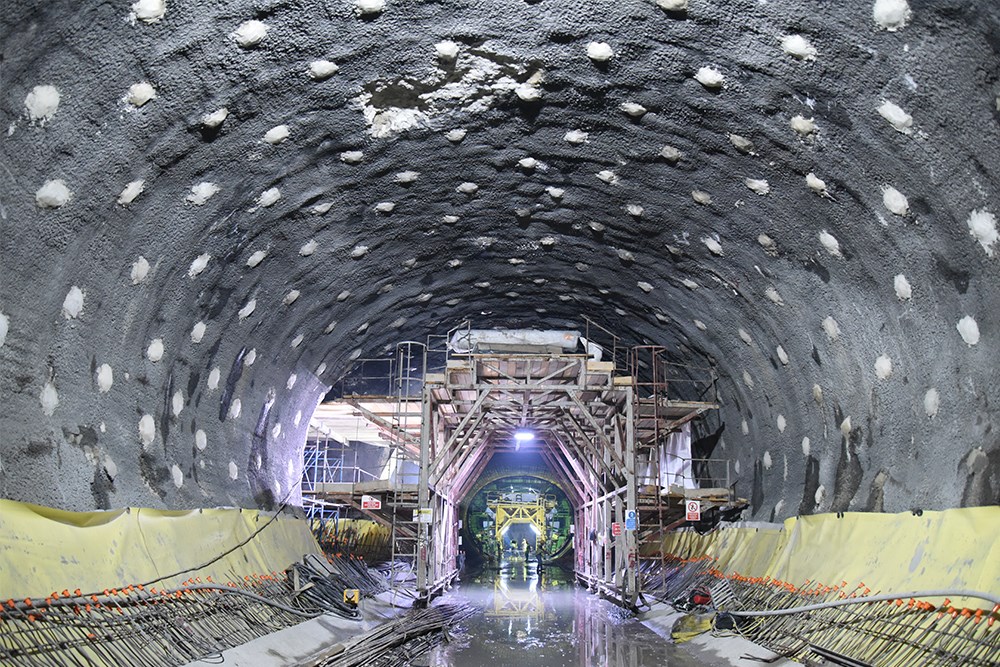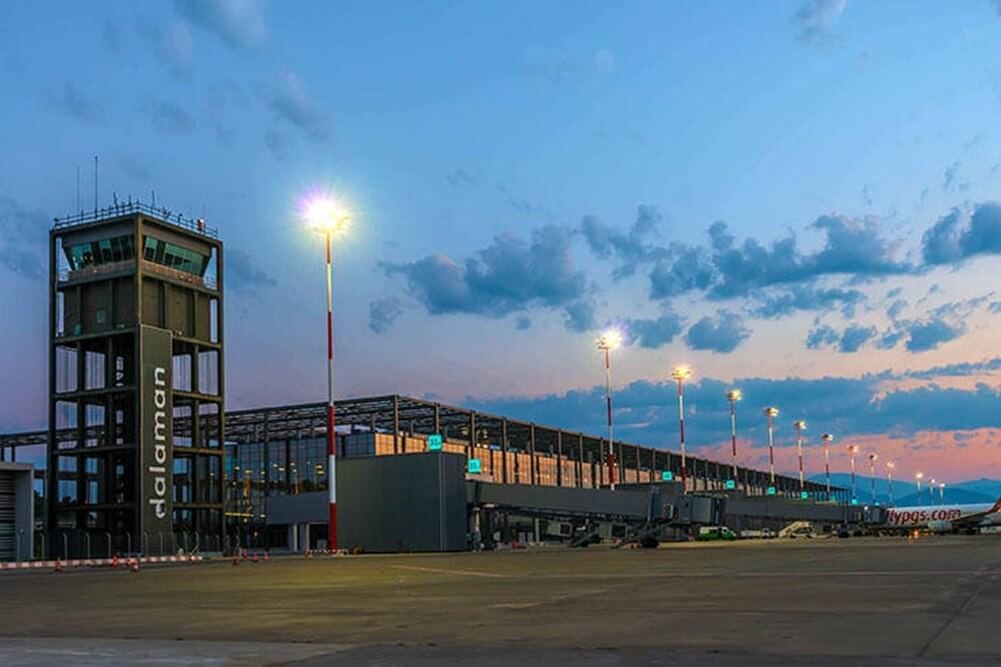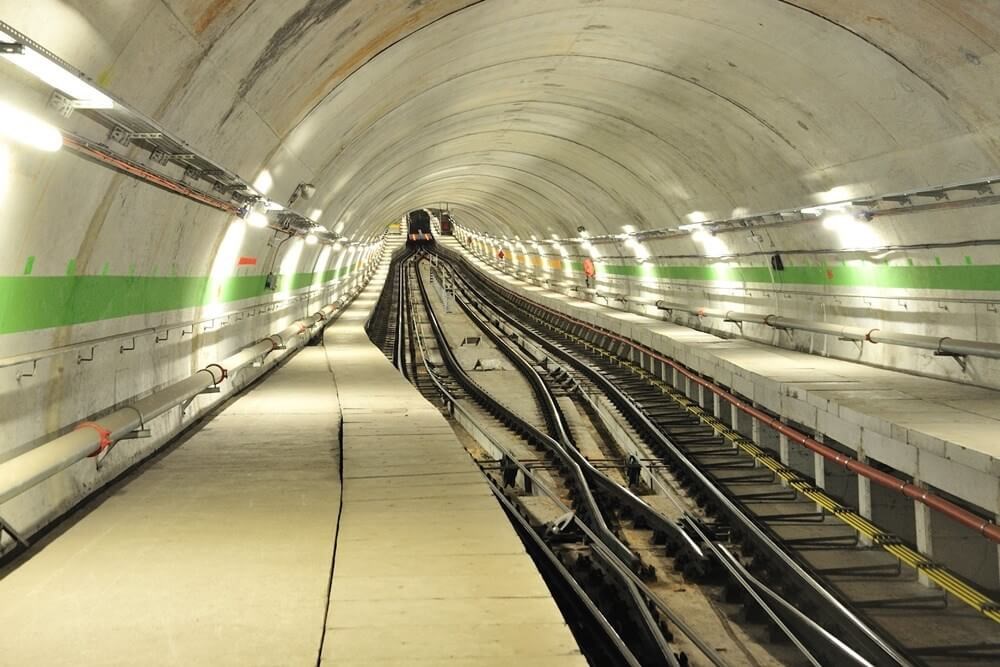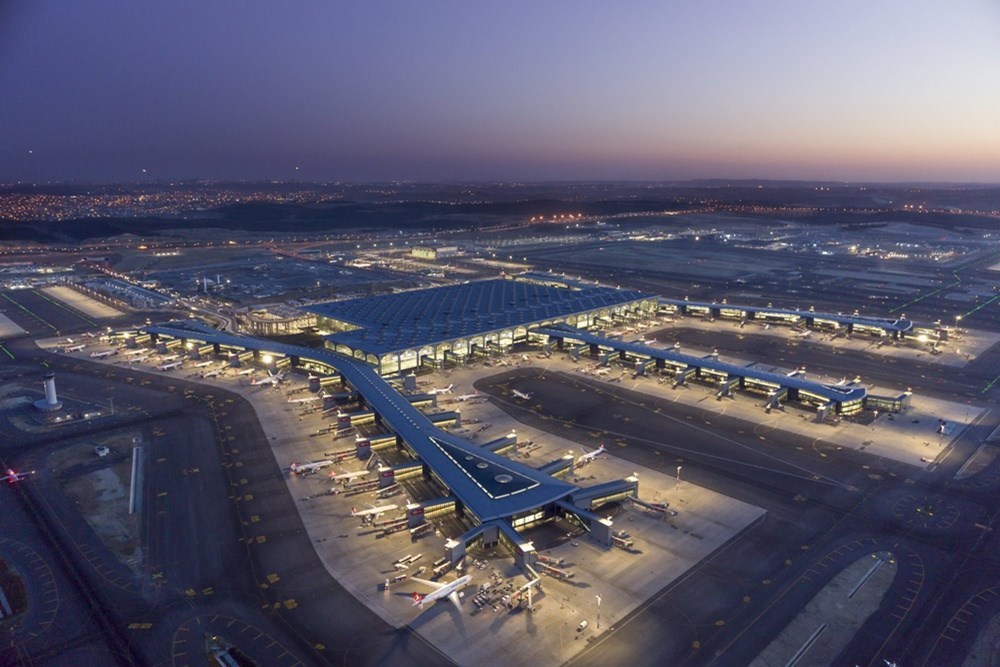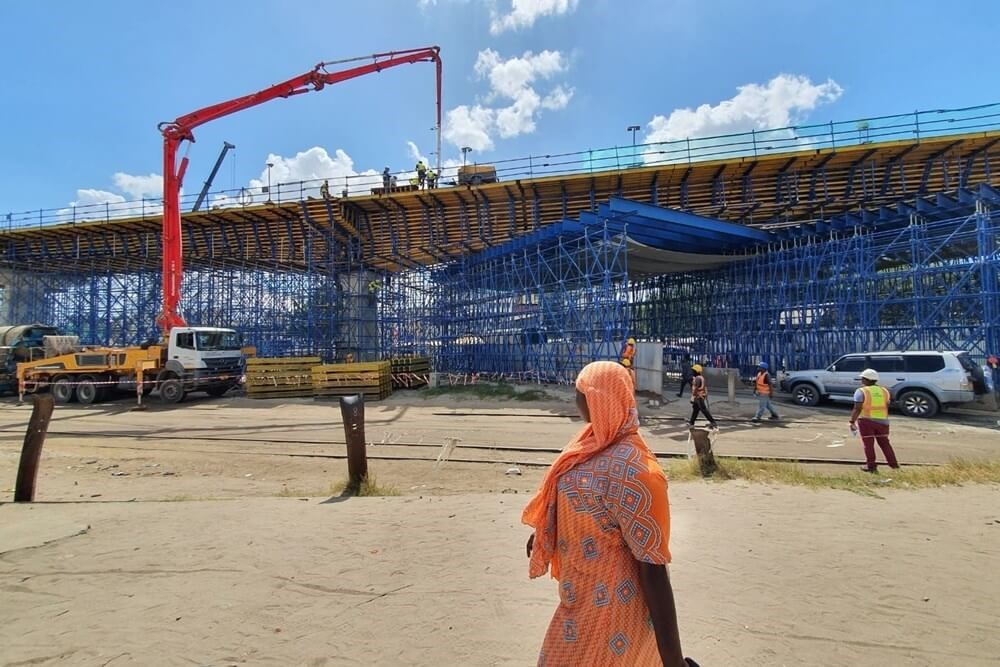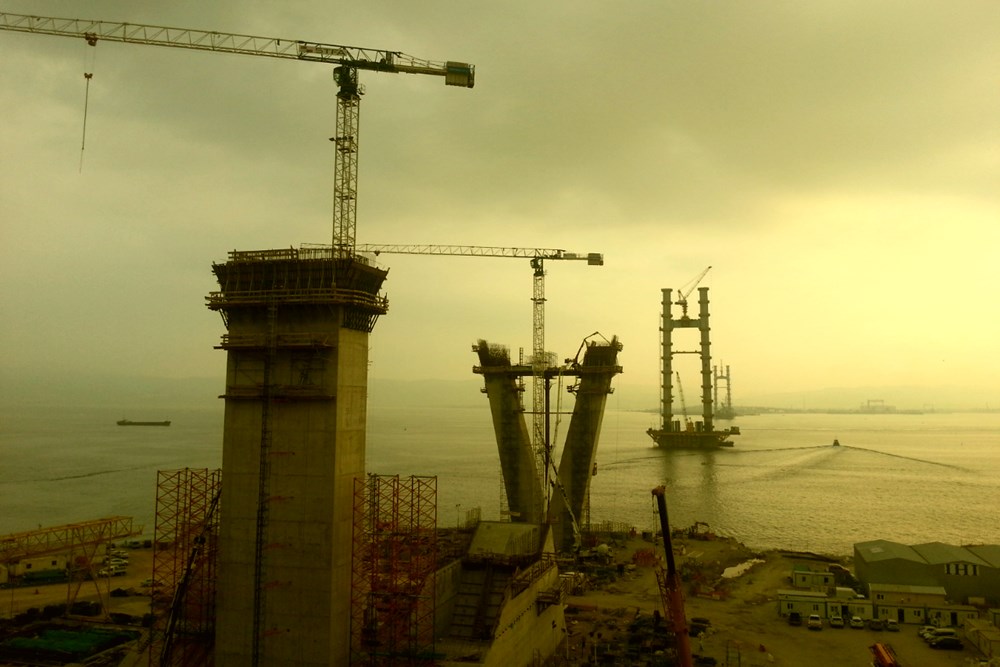Singapore Changi Airport Terminal 3
-
2007
A great deal of natural light and an unobstructed view of the outside world – that was the guiding principle when the airport operator decided to implement this special daylight solution. What began as an idea has grown into a sustainable reality: Terminal 3 at Changi Airport in Singapore offers travelers a remarkable and unusual design that meets all their needs.
This was made possible by the organic-looking roof, extending over a surface area of about 9 hectares with more than 900 specially developed ceiling light wells, thousands of aluminium panels, and a movable shading system from durlum. The ceiling light wells use aluminium reflectors to direct daylight into the building, providing uniform illumination without glare.
The amount of light directed into Terminal 3 is controlled by movable, perforated butterfly panels mounted above each light well. The position of these panels adjusts according to the sun's angle and current daylight and weather conditions. Roof sensors gather information to control these butterfly panels through a central computer that manages the entire terminal. This allows daylight to enter while blocking direct sunlight. During bad weather and at night, direct lighting takes over: these lights, located on the roof below the butterfly panels, activate gradually as sunlight diminishes, creating a seamless transition for passengers. Both artificial lighting and daylight use the same light deflection systems, keeping the heat from radiant lamps outside the building. This has resulted in savings of approximately 2,400 tons of CO2.
This lighting system, designed by Bartenbach Lichtlabor (Lighting Laboratory) and implemented by durlum, creates a pleasant atmosphere for visitors while reducing energy consumption and environmental impact. It's no wonder that Changi Airport in Singapore has maintained its popularity with travelers for so many years.
The durlum dur-TRONIC M smart control system used in the project provides energy efficiency by integrating natural and artificial lighting, automatically operating blinds and light channels based on sun position. The system can be easily managed via tablet or smartphone and dynamically meets the lighting needs of the space through pre-programmed scenarios.


